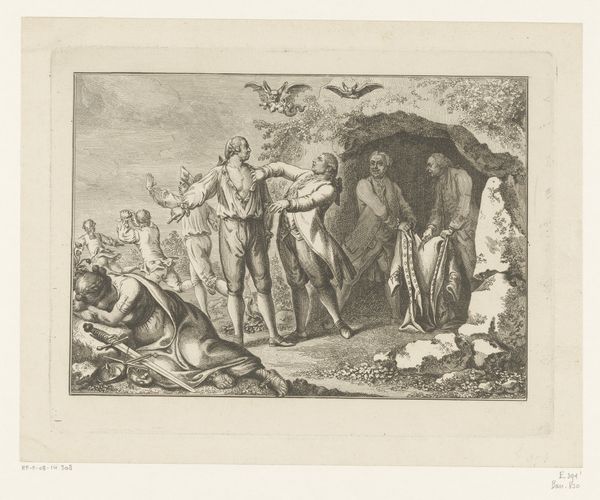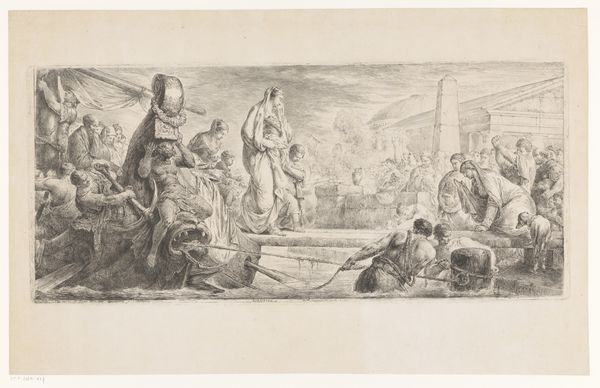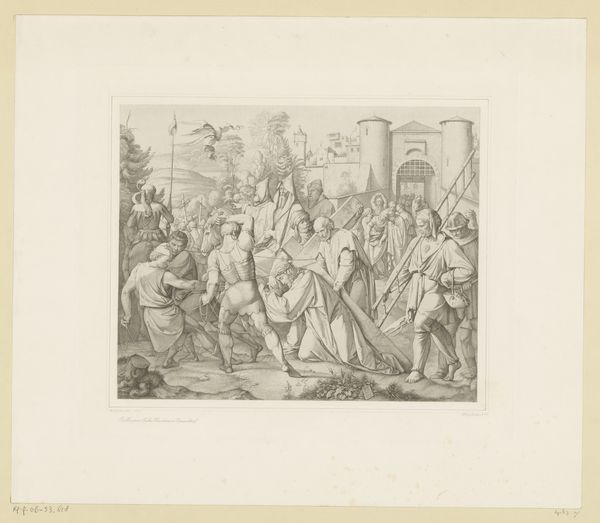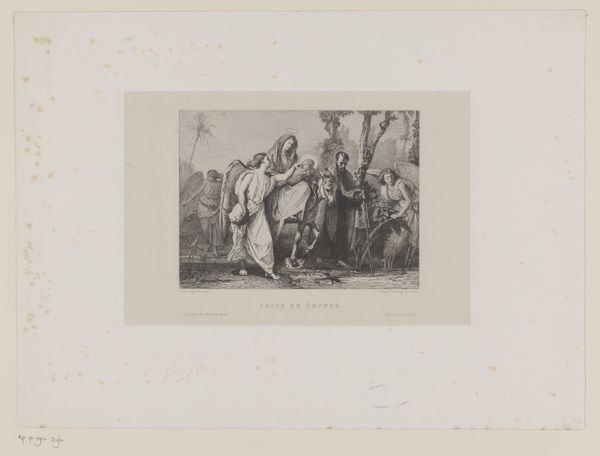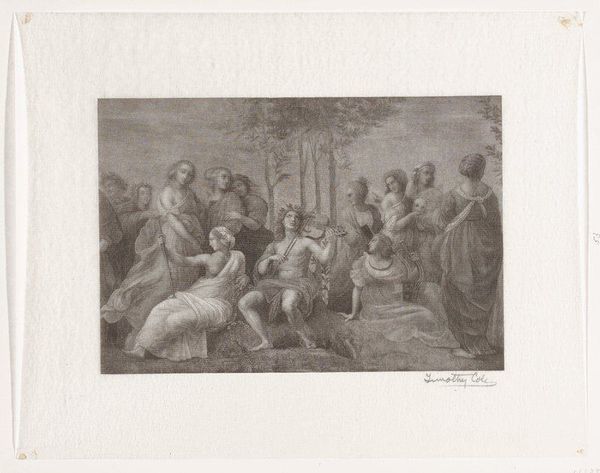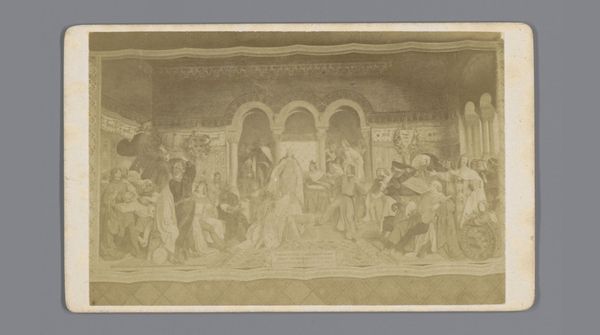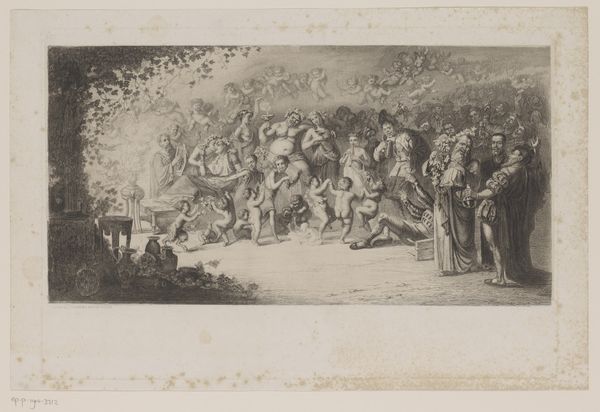
Fotoreproductie van fresco Het beraad der goden door Rafaël in het Farnesina te Rome c. 1870 - 1890
0:00
0:00
#
photo of handprinted image
#
aged paper
#
toned paper
#
light pencil work
#
pastel soft colours
#
ink paper printed
#
pencil sketch
#
white palette
#
watercolour illustration
#
watercolor
Dimensions: height 202 mm, width 259 mm
Copyright: Rijks Museum: Open Domain
Curator: This photograph captures Raphael's fresco "The Council of the Gods" located in the Farnesina in Rome. It's a reproduction made by Domenico Anderson sometime between 1870 and 1890. The tones are remarkable. Editor: Yes, the first thing that strikes me is its ghostly quality. It feels like a fading memory, perfectly suited to a gathering of ancient deities. The light is soft and almost obscures certain figures, pushing others forward in the imagined space. Curator: The composition is quite formal. The gods are arranged in a clear, almost processional manner across the horizontal plane. Note the artist's focus on line and form, with light pencil work delineating each figure distinctly, which creates an impressive sense of order and balance across the expanse. Editor: Absolutely. And look at the powerful iconography packed into this scene. We see Jupiter, King of the Gods, front and center with his eagle. Minerva stands ready with her shield. It is an entire pantheon, and each character has rich associations, representing aspects of human nature and civilization itself. This imagery communicates power and authority but perhaps even hubris as the gods were so often brought low by their own vanity. Curator: Considering that it's a reproduction, there is still a beautiful range in the tonal values which give a subtle dynamism. The figures, although posed, have a fluid and balanced disposition through Raphael’s placement of light. The use of white highlights reinforces the forms, so that their symbolic roles almost come to life despite being a static reproduction. Editor: These classical symbols resonate across time. We see how ancient narratives have shaped our culture, our understanding of power, wisdom, beauty. The reproduction process, especially in this somewhat faded presentation, seems to emphasize that remove, the space between us and the classical world but its persistent relevance is so palpable. Curator: Indeed, the aged paper and printing techniques underscore this. It is a dialogue across centuries that Anderson so dutifully, methodically reproduces. Editor: A powerful glimpse into the cultural wellspring, captured at a fascinating moment in the history of reproduction. It's wonderful how a seemingly simple photograph can be so evocative.
Comments
No comments
Be the first to comment and join the conversation on the ultimate creative platform.


